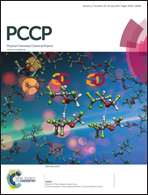Photovoltaic properties of multilayered quantum dot/quantum rod-sensitized TiO2 solar cells fabricated by SILAR and electrophoresis
Abstract
A multilayered semiconductor sensitizer structure composed of three differently sized CdSe quantum rods (QRs), labeled as Q530, Q575, Q590, were prepared and deposited on the surface of mesoporous TiO2 nanoparticles by electrophoretic deposition (EPD) for photovoltaic applications. By varying the arrangement of layers as well as the time of EPD, the photoconversion efficiency was improved from 2.0% with the single layer of CdSe QRs (TiO2/Q590/ZnS) to 2.9% for multilayers (TiO2/Q590Q575/ZnS). The optimal EPD time was shorter for the multilayered structures. The effect of CdS quantum dots (QDs) deposited by successive ionic layer adsorption and reaction (SILAR) was also investigated. The addition of CdS QDs resulted in the enhancement of efficiency to 4.1% for the configuration (TiO2/CdS/Q590Q575/ZnS), due to increased photocurrent and photovoltage. Based on detailed structural, optical, and photoelectrical studies, the increased photocurrent is attributed to broadened light absorption while the increased voltage is due to a shift in the relevant energy levels.


 Please wait while we load your content...
Please wait while we load your content...